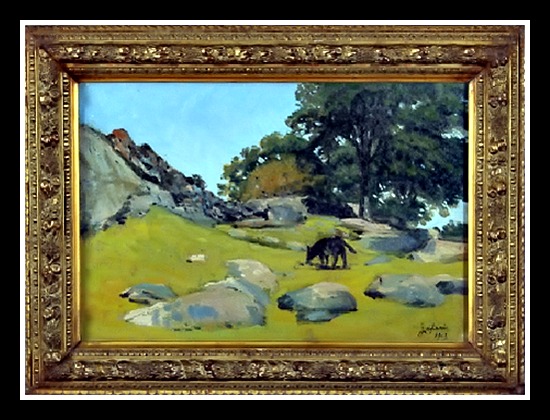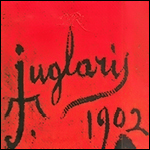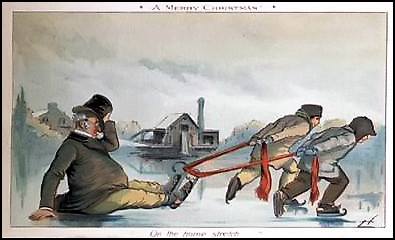


Since ancient times, artists have often “signed” their work. Sometimes they have discreetly carved or painted their full name at the base or in a corner of the art work. In other cases, however, they have left a distinguishing mark, motif, or emblem. Popular with artists has been the use of monograms created from two overlapping initials.

Unfortunately, the signatures, motifs, and monograms employed by artists are not always legible or recognizable, posing problems for those seeking to later verify the source or provenance of an art work. This proved to be a problem in identifying and authenticating Tommaso Juglaris as Michigan’s Capitol artist. The eight muses painted for the Michigan State Capitol rotunda and installed in 1886 were signed with a small, cryptic t-j monogram that to the untrained eye looked like a stick figure. Moreover, for long decades, the t-j monogram was never even noticed because of the difficulty of viewing the Capitol muses up close. During that time, the eight “painted ladies” were mistakenly attributed to a native Michigan artist, Lewis Ives, who was responsible for the sculpting a pediment elsewhere in the building. It was a conservation team from the Detroit Institute of Arts who first discovered the monogram on the Capitol muses in 1992. Thereafter, it was not until a visitor arrived in search of works by Tommaso Juglaris, based upon an obscure reference to the Michigan Capitol in a 1905 Craftsman article, that it became possible to correctly interpret the t-j monogram.

Initially, in verifying the provenance of the Michigan Capitol muses, there were hopes of locating identical t-j monograms on Juglaris’s other known works in the United States. Yet his murals at the Franklin Public Library, outside Boston, somewhat differently display his full surname, albeit with the “j” of Juglaris crossed to simultaneously resemble the letter “t.” Ultimately, it took an investigatory trip to Juglaris’s home cities of Turin and Moncalieri in northern Italy to find additional art works from his brush that clearly employ the same “t-j” monogram that can be seen on the Michigan Capitol muses. One of the Juglaris paintings emblazoned with the t-j monogram, La Zingeralla or The Gypsy Girl, is owned by the Famija Moncalereisa, a local cultural heritage organization.

Further research has revealed that over the course of his career in Europe and America Juglaris was not consistent in the way that he signed his art works. There is not only a difference between the monogram used on the Michigan Capitol muses and his signature on the Franklin Public Library murals. On Christmas cards designed for Louis Prang, Juglaris used still another, simpler t-j variation with his initials presented side by side. In addition, on stained glass windows that Juglaris is known to have designed for the Channing Memorial Church (today, the Newton Presbyterian Church) in Newton, Massachusetts, his t-j monogram is mingled with other initials, perhaps representing an artistic collaboration with Donald McDonald or yet another artist employed by the same stained glass workshop.
Juglaris’s use of varied signatures and monograms has undoubtedly impeded the recognition of other art works that he designed and executed. In Michigan, it certainly made him a man of mystery and an artist incognito for almost a century. However, our greater awareness of Juglaris’s different ways of signing his art now makes it possible to more widely credit him for considerable body of the work he accomplished, particularly in the United States.